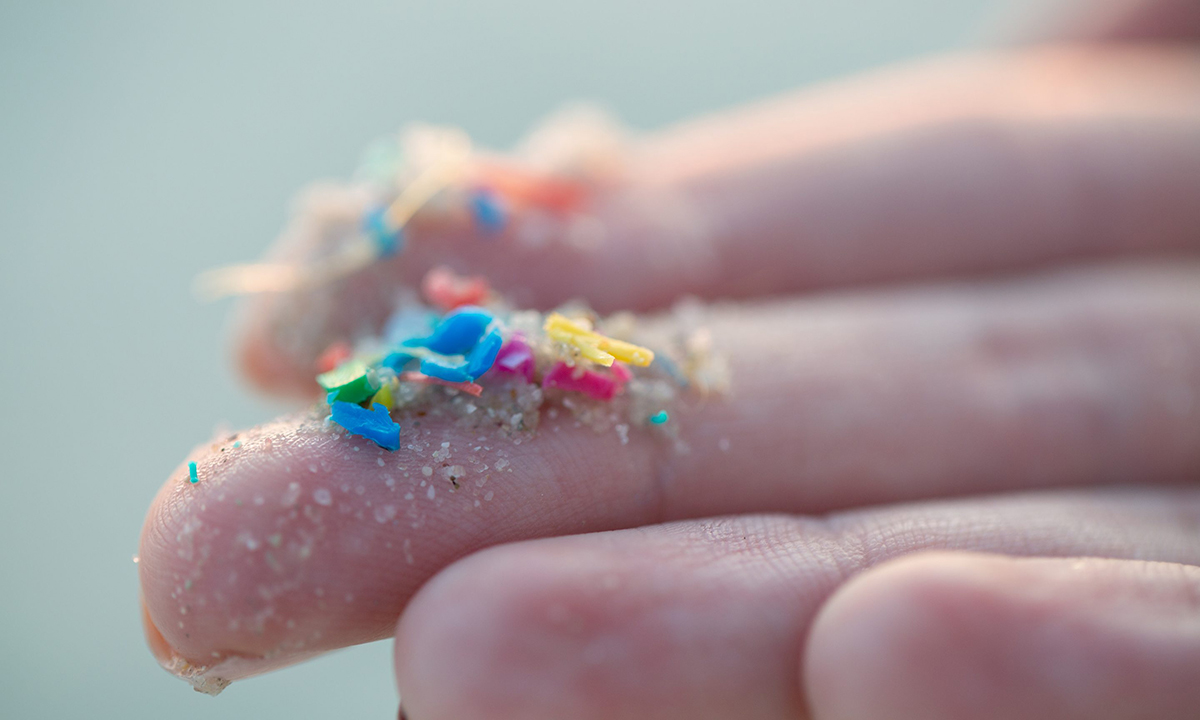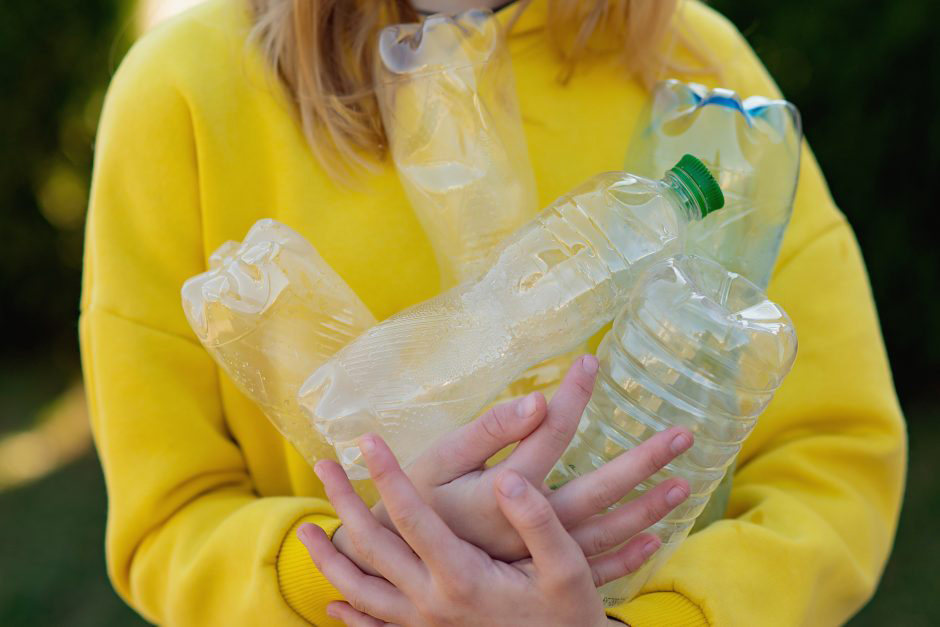
盡管微塑料對(duì)地球造成了巨大的破壞,但也許只有對(duì)人體構(gòu)成迫在眉睫的威脅,才能讓人們對(duì)這一問(wèn)題給予應(yīng)有的關(guān)注。
研究人員表示,這一時(shí)刻已經(jīng)到來(lái)。最近幾項(xiàng)關(guān)于微塑料[指大量的微小塑料顆粒(直徑為5毫米或更小),需要數(shù)百年的時(shí)間才能降解]的研究表明,它們不僅無(wú)處不在,而且正在入侵血液,造成潛在的危害。
這項(xiàng)研究尚未完成,科學(xué)技術(shù)也在不斷進(jìn)步。盡管如此,該領(lǐng)域的研究人員正在達(dá)成共識(shí):微塑料對(duì)身體某些功能的威脅是真實(shí)存在的,而且這種威脅還在不斷增加。
歐洲的微塑料和人類健康研究先驅(qū)、獨(dú)立科學(xué)家希瑟·萊斯利說(shuō):“我們必須決定如何處理體內(nèi)有極少量塑料的這一認(rèn)知。”萊斯利對(duì)《財(cái)富》雜志表示,雖然潛在危害的程度仍未探明,但“關(guān)于微塑料積聚的組織中炎癥效應(yīng)和代謝變化的證據(jù)正在增加。”
發(fā)表在《自然醫(yī)學(xué)》(Nature Medicine)上的一份新報(bào)告暗示了這一問(wèn)題的嚴(yán)重性。雖然對(duì)微塑料生物效應(yīng)的研究已經(jīng)長(zhǎng)達(dá)數(shù)十年,但大部分研究都集中在環(huán)境方面,尤其是海洋環(huán)境。直到最近的研究才在人體的多個(gè)器官中檢測(cè)到這些物質(zhì)的存在,包括血液、肺、胎盤和糞便,以及母乳、睪丸和精液。
在某些方面,這樣的結(jié)果不足為奇。塑料制品及垃圾在地球上無(wú)處不在。微塑料在食物中,甚至是生鮮水果和蔬菜中普遍存在,而且自來(lái)水和瓶裝水中也發(fā)現(xiàn)了微塑料。美國(guó)加州最近成為世界上第一個(gè)對(duì)其飲用水進(jìn)行微塑料檢測(cè)的政府實(shí)體,而對(duì)從9個(gè)國(guó)家購(gòu)買的250多瓶水進(jìn)行的檢測(cè)發(fā)現(xiàn),93%的瓶裝水含有微塑料。
微塑料是如何危害健康的?
自第二次世界大戰(zhàn)(World War II)后的十年間塑料誕生以來(lái),其產(chǎn)量以驚人的速度增長(zhǎng),每年均超過(guò)4.3億噸。其中約有三分之二是為短期使用而設(shè)計(jì)的(例如水瓶和零食包裝),然而塑料的使用壽命卻長(zhǎng)得驚人(某些產(chǎn)品的使用壽命長(zhǎng)達(dá)450年到1,000年),而且這種材料在使用過(guò)程中會(huì)不斷降解成越來(lái)越小的顆粒。
由此產(chǎn)生的微塑料及其表親納米塑料(肉眼看不見)中含有什么?根據(jù)最近的研究,塑料工業(yè)的各種產(chǎn)品中至少含有16,000種化學(xué)物質(zhì),其中超過(guò)四分之一被認(rèn)為對(duì)人類健康和環(huán)境有害。添加的化學(xué)物質(zhì)可能包括致癌物、內(nèi)分泌干擾物和神經(jīng)毒劑等劇毒化合物,或影響生殖的化學(xué)物質(zhì),比如雙酚A、鄰苯二甲酸鹽、雙酚以及全氟和多氟烷基物質(zhì)(PFAS)。
一系列研究已經(jīng)開始證實(shí)這一切對(duì)人類造成的傷害。今年3月,《新英格蘭醫(yī)學(xué)雜志》(New England Journal of Medicine)發(fā)表了一份令人震驚的報(bào)告。該報(bào)告發(fā)現(xiàn),在接受頸動(dòng)脈疾病檢測(cè)的患者中,在動(dòng)脈內(nèi)壁斑塊中檢測(cè)出微塑料的患者罹患心臟病、中風(fēng)或死亡的風(fēng)險(xiǎn)是未檢測(cè)出微塑料的患者的4.5倍。
微粒物質(zhì)專家菲利普·德莫克里托說(shuō):“這一比例相當(dāng)高。我們需要進(jìn)行更多類似的研究,歐洲同行走在了我們前面。在美國(guó),我們通常要等到人們?yōu)l臨死亡時(shí)才進(jìn)行研究。”

研究微塑料與炎癥性腸病(IBD)之間聯(lián)系的研究人員在人類糞便中檢測(cè)到15種微塑料,并發(fā)現(xiàn)炎癥性腸病患者糞便中的微塑料濃度高于健康人群。根據(jù)記錄,人類肺部的所有部位都存在微塑料,但與人類疾病的直接聯(lián)系尚未確定。一項(xiàng)研究發(fā)現(xiàn),如果嬰兒用聚丙烯瓶喝配方奶粉,他們可能就會(huì)接觸到更高水平的微塑料,這突出了作者的觀點(diǎn):我們“迫切需要”確定微塑料對(duì)嬰兒健康可能造成的風(fēng)險(xiǎn)(如果會(huì)造成風(fēng)險(xiǎn)的話)。科學(xué)家分析了62份胎盤組織樣本,在每份樣本中都發(fā)現(xiàn)了聚乙烯(一種用于制造塑料瓶的塑料)。
據(jù)估計(jì),僅在2018年,與塑料化學(xué)品有關(guān)的健康問(wèn)題就使美國(guó)醫(yī)療保健系統(tǒng)損失了2,490億美元。男性和女性的不育癥、癌癥、神經(jīng)發(fā)育障礙、心血管疾病和腎臟疾病都與微塑料中含有的化學(xué)添加劑有關(guān)。紡織廠的塑料生產(chǎn)工人死于肺癌和肺病的比例更高。
微塑料對(duì)海洋和水生生物造成的損害已經(jīng)被廣泛報(bào)道,但其對(duì)人體的威脅尚未明確界定。但是證據(jù)正在不斷增加——盡管有關(guān)這一話題的科學(xué)研究仍然很稚嫩,但人類的大腦可能極易受其影響。
兩位土耳其科學(xué)家在一部名為《塑料人》(Plastic People)的新紀(jì)錄片里透露,他們?cè)谀X腫瘤組織中發(fā)現(xiàn)了微塑料,但他們的研究結(jié)果尚未發(fā)表或經(jīng)過(guò)同行評(píng)審。研究人員之一塞達(dá)特·岡多杜告訴《財(cái)富》雜志:“我們的研究表明,血腦屏障受損,使得微塑料和其他微粒得以通過(guò)。”在小鼠體內(nèi)觀察到,“非高劑量”的微粒在暴露三周后就可以穿過(guò)這道屏障,并引起行為變化。
吸入和攝入是微塑料進(jìn)入人體的其他途徑。在灰塵、化妝品、海鮮、啤酒、鹽、雨水、土壤甚至我們呼吸的空氣中都發(fā)現(xiàn)了微塑料。德莫克里托稱:“我們喝的水、吃的食物都含有微塑料。”
除了自身有害的物理特性外,微塑料還能夠吸收其他來(lái)源的化學(xué)污染物,例如海水里的多氯聯(lián)苯。研究員雪莉·A·梅森在接受美國(guó)頻譜新聞網(wǎng)(Spectrum News)采訪時(shí),稱它們?yōu)椤靶《就琛保?并指出它們可以吸收水道中已經(jīng)存在的化學(xué)物質(zhì),最終累積的毒素“比水里的毒素高出100萬(wàn)倍”。
挪威科技大學(xué)(Norwegian University of Science and Technology)的生物學(xué)家和環(huán)境毒理學(xué)家馬丁·瓦格納指出,微塑料一旦進(jìn)入人體,就會(huì)被識(shí)別為外來(lái)顆粒。它們會(huì)引發(fā)免疫系統(tǒng)的炎癥反應(yīng),旨在將其排出體外,就像人體對(duì)抗細(xì)菌一樣——只是微塑料無(wú)法被降解。瓦格納說(shuō):“因此,它們會(huì)引發(fā)慢性炎癥。顯而易見,對(duì)我而言,這是一大重要因素。”包括糖尿病、心血管疾病、癌癥和其他疾病在內(nèi)的多種疾病都與慢性炎癥有關(guān),也是全球主要死因。
《濃度高于水:尋求塑料危機(jī)的解決方案》(Thicker Than Water: The Quest for Solutions to the Plastic Crisis)一書的作者埃里卡·奇里諾說(shuō),在實(shí)驗(yàn)室測(cè)試中,有證明表明,暴露于微塑料顆粒的人類細(xì)胞出現(xiàn)細(xì)胞損傷和死亡現(xiàn)象。此外,奇里諾指出,科學(xué)家們“正在競(jìng)相了解微塑料是否與癌癥發(fā)病率上升有關(guān),尤其是年輕人罹患的胃腸道系統(tǒng)癌癥。”
減少微塑料接觸
為荷蘭和世界衛(wèi)生組織(World Health Organization)的政策制定者提供咨詢的吸入毒理學(xué)家弗萊明·卡西表示,目前還不清楚微塑料在人體中達(dá)到何等水平才會(huì)帶來(lái)威脅。卡西說(shuō):“我們很想了解這一點(diǎn)。這些物質(zhì)是否會(huì)累積,包括我們已知的某些物質(zhì)如果在體內(nèi)達(dá)到一定量,會(huì)產(chǎn)生不良影響。”
到目前為止,這些關(guān)鍵問(wèn)題還沒有確切的答案。然而,對(duì)于那些研究微塑料多年或數(shù)十年的人來(lái)說(shuō),新出現(xiàn)的證據(jù)普遍指向了一個(gè)方向——除非采取更激進(jìn)、更全面的行動(dòng),否則它將繼續(xù)朝著這個(gè)方向發(fā)展。
奇里諾表示,由于99%的塑料都是由化石燃料制成的,因此只有嚴(yán)格限制塑料生產(chǎn),同時(shí)對(duì)塑料和化石燃料行業(yè)實(shí)施更為嚴(yán)格的監(jiān)管,才有可能起到作用。塑料工業(yè)協(xié)會(huì)(The Plastics Industry Association)沒有回應(yīng)《財(cái)富》雜志的置評(píng)請(qǐng)求。
奇里諾稱:“最終逐步淘汰塑料和化石燃料是控制塑料污染的唯一途徑。如果浴缸溢水,你不會(huì)直接開始拖地。首先,你會(huì)關(guān)閉水龍頭。”
4月下旬,瓦格納參加了在加拿大渥太華舉行的聯(lián)合國(guó)全球塑料峰會(huì),他是“有效塑料條約科學(xué)家聯(lián)盟”(Scientists’ Coalition for an Effective Plastics Treaty)的成員。峰會(huì)的目標(biāo)是制定一項(xiàng)具有法律約束力的條約,以遏制全球塑料污染。
峰會(huì)的與會(huì)者并不孤單。據(jù)路透社(Reuters)報(bào)道,近200名化石燃料和化工行業(yè)的游說(shuō)者也登記參加了此次會(huì)議,這一比例比2023年11月的聯(lián)合國(guó)會(huì)議增加了近40%。
瓦格納對(duì)《財(cái)富》雜志表示:“我們?nèi)〉昧艘恍┻M(jìn)展。但是,石油生產(chǎn)國(guó)聚集在一起,我們稱之為低雄心聯(lián)盟,目的是拖延談判,減輕條約推行力度。”
與此同時(shí),人們可能希望盡可能減少自己接觸微塑料的機(jī)會(huì)。專家表示,在大多數(shù)情況下,這需要從小事做起。把塑料水瓶換成玻璃或鋼制水瓶是其中一個(gè)步驟,在微波爐中只使用玻璃或陶瓷容器來(lái)加熱食物也是其中一個(gè)步驟(加熱會(huì)導(dǎo)致塑料釋放有害化學(xué)物質(zhì))。瓦格納稱,打掃房子也大有裨益。“我知道人們不喜歡這樣做,但這確實(shí)有助于清除灰塵,包括所有的微納米塑料。”一些專家建議采取更強(qiáng)有力的措施:用木地板取代含有塑料纖維的地毯,或者選擇只由天然纖維制成的衣服。
當(dāng)然,這一切都不是新動(dòng)態(tài)。但是,越來(lái)越多的證據(jù)表明,微塑料存在于人體內(nèi),并可能帶來(lái)各種健康問(wèn)題,會(huì)讓人們對(duì)這一話題產(chǎn)生新的緊迫感。瓦格納說(shuō):“還是有希望的,而且總會(huì)有希望的。”(財(cái)富中文網(wǎng))
譯者:中慧言-王芳
盡管微塑料對(duì)地球造成了巨大的破壞,但也許只有對(duì)人體構(gòu)成迫在眉睫的威脅,才能讓人們對(duì)這一問(wèn)題給予應(yīng)有的關(guān)注。
研究人員表示,這一時(shí)刻已經(jīng)到來(lái)。最近幾項(xiàng)關(guān)于微塑料[指大量的微小塑料顆粒(直徑為5毫米或更小),需要數(shù)百年的時(shí)間才能降解]的研究表明,它們不僅無(wú)處不在,而且正在入侵血液,造成潛在的危害。
這項(xiàng)研究尚未完成,科學(xué)技術(shù)也在不斷進(jìn)步。盡管如此,該領(lǐng)域的研究人員正在達(dá)成共識(shí):微塑料對(duì)身體某些功能的威脅是真實(shí)存在的,而且這種威脅還在不斷增加。
歐洲的微塑料和人類健康研究先驅(qū)、獨(dú)立科學(xué)家希瑟·萊斯利說(shuō):“我們必須決定如何處理體內(nèi)有極少量塑料的這一認(rèn)知。”萊斯利對(duì)《財(cái)富》雜志表示,雖然潛在危害的程度仍未探明,但“關(guān)于微塑料積聚的組織中炎癥效應(yīng)和代謝變化的證據(jù)正在增加。”
發(fā)表在《自然醫(yī)學(xué)》(Nature Medicine)上的一份新報(bào)告暗示了這一問(wèn)題的嚴(yán)重性。雖然對(duì)微塑料生物效應(yīng)的研究已經(jīng)長(zhǎng)達(dá)數(shù)十年,但大部分研究都集中在環(huán)境方面,尤其是海洋環(huán)境。直到最近的研究才在人體的多個(gè)器官中檢測(cè)到這些物質(zhì)的存在,包括血液、肺、胎盤和糞便,以及母乳、睪丸和精液。
在某些方面,這樣的結(jié)果不足為奇。塑料制品及垃圾在地球上無(wú)處不在。微塑料在食物中,甚至是生鮮水果和蔬菜中普遍存在,而且自來(lái)水和瓶裝水中也發(fā)現(xiàn)了微塑料。美國(guó)加州最近成為世界上第一個(gè)對(duì)其飲用水進(jìn)行微塑料檢測(cè)的政府實(shí)體,而對(duì)從9個(gè)國(guó)家購(gòu)買的250多瓶水進(jìn)行的檢測(cè)發(fā)現(xiàn),93%的瓶裝水含有微塑料。
微塑料是如何危害健康的?
自第二次世界大戰(zhàn)(World War II)后的十年間塑料誕生以來(lái),其產(chǎn)量以驚人的速度增長(zhǎng),每年均超過(guò)4.3億噸。其中約有三分之二是為短期使用而設(shè)計(jì)的(例如水瓶和零食包裝),然而塑料的使用壽命卻長(zhǎng)得驚人(某些產(chǎn)品的使用壽命長(zhǎng)達(dá)450年到1,000年),而且這種材料在使用過(guò)程中會(huì)不斷降解成越來(lái)越小的顆粒。
由此產(chǎn)生的微塑料及其表親納米塑料(肉眼看不見)中含有什么?根據(jù)最近的研究,塑料工業(yè)的各種產(chǎn)品中至少含有16,000種化學(xué)物質(zhì),其中超過(guò)四分之一被認(rèn)為對(duì)人類健康和環(huán)境有害。添加的化學(xué)物質(zhì)可能包括致癌物、內(nèi)分泌干擾物和神經(jīng)毒劑等劇毒化合物,或影響生殖的化學(xué)物質(zhì),比如雙酚A、鄰苯二甲酸鹽、雙酚以及全氟和多氟烷基物質(zhì)(PFAS)。
一系列研究已經(jīng)開始證實(shí)這一切對(duì)人類造成的傷害。今年3月,《新英格蘭醫(yī)學(xué)雜志》(New England Journal of Medicine)發(fā)表了一份令人震驚的報(bào)告。該報(bào)告發(fā)現(xiàn),在接受頸動(dòng)脈疾病檢測(cè)的患者中,在動(dòng)脈內(nèi)壁斑塊中檢測(cè)出微塑料的患者罹患心臟病、中風(fēng)或死亡的風(fēng)險(xiǎn)是未檢測(cè)出微塑料的患者的4.5倍。
微粒物質(zhì)專家菲利普·德莫克里托說(shuō):“這一比例相當(dāng)高。我們需要進(jìn)行更多類似的研究,歐洲同行走在了我們前面。在美國(guó),我們通常要等到人們?yōu)l臨死亡時(shí)才進(jìn)行研究。”
研究微塑料與炎癥性腸病(IBD)之間聯(lián)系的研究人員在人類糞便中檢測(cè)到15種微塑料,并發(fā)現(xiàn)炎癥性腸病患者糞便中的微塑料濃度高于健康人群。根據(jù)記錄,人類肺部的所有部位都存在微塑料,但與人類疾病的直接聯(lián)系尚未確定。一項(xiàng)研究發(fā)現(xiàn),如果嬰兒用聚丙烯瓶喝配方奶粉,他們可能就會(huì)接觸到更高水平的微塑料,這突出了作者的觀點(diǎn):我們“迫切需要”確定微塑料對(duì)嬰兒健康可能造成的風(fēng)險(xiǎn)(如果會(huì)造成風(fēng)險(xiǎn)的話)。科學(xué)家分析了62份胎盤組織樣本,在每份樣本中都發(fā)現(xiàn)了聚乙烯(一種用于制造塑料瓶的塑料)。
據(jù)估計(jì),僅在2018年,與塑料化學(xué)品有關(guān)的健康問(wèn)題就使美國(guó)醫(yī)療保健系統(tǒng)損失了2,490億美元。男性和女性的不育癥、癌癥、神經(jīng)發(fā)育障礙、心血管疾病和腎臟疾病都與微塑料中含有的化學(xué)添加劑有關(guān)。紡織廠的塑料生產(chǎn)工人死于肺癌和肺病的比例更高。
微塑料對(duì)海洋和水生生物造成的損害已經(jīng)被廣泛報(bào)道,但其對(duì)人體的威脅尚未明確界定。但是證據(jù)正在不斷增加——盡管有關(guān)這一話題的科學(xué)研究仍然很稚嫩,但人類的大腦可能極易受其影響。
兩位土耳其科學(xué)家在一部名為《塑料人》(Plastic People)的新紀(jì)錄片里透露,他們?cè)谀X腫瘤組織中發(fā)現(xiàn)了微塑料,但他們的研究結(jié)果尚未發(fā)表或經(jīng)過(guò)同行評(píng)審。研究人員之一塞達(dá)特·岡多杜告訴《財(cái)富》雜志:“我們的研究表明,血腦屏障受損,使得微塑料和其他微粒得以通過(guò)。”在小鼠體內(nèi)觀察到,“非高劑量”的微粒在暴露三周后就可以穿過(guò)這道屏障,并引起行為變化。
吸入和攝入是微塑料進(jìn)入人體的其他途徑。在灰塵、化妝品、海鮮、啤酒、鹽、雨水、土壤甚至我們呼吸的空氣中都發(fā)現(xiàn)了微塑料。德莫克里托稱:“我們喝的水、吃的食物都含有微塑料。”
除了自身有害的物理特性外,微塑料還能夠吸收其他來(lái)源的化學(xué)污染物,例如海水里的多氯聯(lián)苯。研究員雪莉·A·梅森在接受美國(guó)頻譜新聞網(wǎng)(Spectrum News)采訪時(shí),稱它們?yōu)椤靶《就琛保?并指出它們可以吸收水道中已經(jīng)存在的化學(xué)物質(zhì),最終累積的毒素“比水里的毒素高出100萬(wàn)倍”。
挪威科技大學(xué)(Norwegian University of Science and Technology)的生物學(xué)家和環(huán)境毒理學(xué)家馬丁·瓦格納指出,微塑料一旦進(jìn)入人體,就會(huì)被識(shí)別為外來(lái)顆粒。它們會(huì)引發(fā)免疫系統(tǒng)的炎癥反應(yīng),旨在將其排出體外,就像人體對(duì)抗細(xì)菌一樣——只是微塑料無(wú)法被降解。瓦格納說(shuō):“因此,它們會(huì)引發(fā)慢性炎癥。顯而易見,對(duì)我而言,這是一大重要因素。”包括糖尿病、心血管疾病、癌癥和其他疾病在內(nèi)的多種疾病都與慢性炎癥有關(guān),也是全球主要死因。
《濃度高于水:尋求塑料危機(jī)的解決方案》(Thicker Than Water: The Quest for Solutions to the Plastic Crisis)一書的作者埃里卡·奇里諾說(shuō),在實(shí)驗(yàn)室測(cè)試中,有證明表明,暴露于微塑料顆粒的人類細(xì)胞出現(xiàn)細(xì)胞損傷和死亡現(xiàn)象。此外,奇里諾指出,科學(xué)家們“正在競(jìng)相了解微塑料是否與癌癥發(fā)病率上升有關(guān),尤其是年輕人罹患的胃腸道系統(tǒng)癌癥。”
減少微塑料接觸
為荷蘭和世界衛(wèi)生組織(World Health Organization)的政策制定者提供咨詢的吸入毒理學(xué)家弗萊明·卡西表示,目前還不清楚微塑料在人體中達(dá)到何等水平才會(huì)帶來(lái)威脅。卡西說(shuō):“我們很想了解這一點(diǎn)。這些物質(zhì)是否會(huì)累積,包括我們已知的某些物質(zhì)如果在體內(nèi)達(dá)到一定量,會(huì)產(chǎn)生不良影響。”
到目前為止,這些關(guān)鍵問(wèn)題還沒有確切的答案。然而,對(duì)于那些研究微塑料多年或數(shù)十年的人來(lái)說(shuō),新出現(xiàn)的證據(jù)普遍指向了一個(gè)方向——除非采取更激進(jìn)、更全面的行動(dòng),否則它將繼續(xù)朝著這個(gè)方向發(fā)展。
奇里諾表示,由于99%的塑料都是由化石燃料制成的,因此只有嚴(yán)格限制塑料生產(chǎn),同時(shí)對(duì)塑料和化石燃料行業(yè)實(shí)施更為嚴(yán)格的監(jiān)管,才有可能起到作用。塑料工業(yè)協(xié)會(huì)(The Plastics Industry Association)沒有回應(yīng)《財(cái)富》雜志的置評(píng)請(qǐng)求。
奇里諾稱:“最終逐步淘汰塑料和化石燃料是控制塑料污染的唯一途徑。如果浴缸溢水,你不會(huì)直接開始拖地。首先,你會(huì)關(guān)閉水龍頭。”
4月下旬,瓦格納參加了在加拿大渥太華舉行的聯(lián)合國(guó)全球塑料峰會(huì),他是“有效塑料條約科學(xué)家聯(lián)盟”(Scientists’ Coalition for an Effective Plastics Treaty)的成員。峰會(huì)的目標(biāo)是制定一項(xiàng)具有法律約束力的條約,以遏制全球塑料污染。
峰會(huì)的與會(huì)者并不孤單。據(jù)路透社(Reuters)報(bào)道,近200名化石燃料和化工行業(yè)的游說(shuō)者也登記參加了此次會(huì)議,這一比例比2023年11月的聯(lián)合國(guó)會(huì)議增加了近40%。
瓦格納對(duì)《財(cái)富》雜志表示:“我們?nèi)〉昧艘恍┻M(jìn)展。但是,石油生產(chǎn)國(guó)聚集在一起,我們稱之為低雄心聯(lián)盟,目的是拖延談判,減輕條約推行力度。”
與此同時(shí),人們可能希望盡可能減少自己接觸微塑料的機(jī)會(huì)。專家表示,在大多數(shù)情況下,這需要從小事做起。把塑料水瓶換成玻璃或鋼制水瓶是其中一個(gè)步驟,在微波爐中只使用玻璃或陶瓷容器來(lái)加熱食物也是其中一個(gè)步驟(加熱會(huì)導(dǎo)致塑料釋放有害化學(xué)物質(zhì))。瓦格納稱,打掃房子也大有裨益。“我知道人們不喜歡這樣做,但這確實(shí)有助于清除灰塵,包括所有的微納米塑料。”一些專家建議采取更強(qiáng)有力的措施:用木地板取代含有塑料纖維的地毯,或者選擇只由天然纖維制成的衣服。
當(dāng)然,這一切都不是新動(dòng)態(tài)。但是,越來(lái)越多的證據(jù)表明,微塑料存在于人體內(nèi),并可能帶來(lái)各種健康問(wèn)題,會(huì)讓人們對(duì)這一話題產(chǎn)生新的緊迫感。瓦格納說(shuō):“還是有希望的,而且總會(huì)有希望的。”(財(cái)富中文網(wǎng))
譯者:中慧言-王芳
For all the damage that microplastics are doing to the planet, it may be that only an impending threat to the human body will direct the kind of attention to the issue that it has long deserved.
That moment, researchers say, is here. Several recent studies into microplastics, the voluminous and tiny (think 5mm or smaller) bits of material that can take hundreds of years to degrade, suggest not only that they are everywhere, but that they’re making their way into our bloodstreams–with potentially hazardous results.
The research isn’t nearly complete, and the science is evolving. Still, a consensus is forming among those in the field: The threat of microplastics to some of our body functions is real, and it is growing.
“We humans have to decide what to do with the knowledge that we are a little bit plastic inside,” says Heather Leslie, an independent scientist who pioneered microplastics and human health research in Europe. While the extent of the potential damage is still unexplored territory, Leslie tells Fortune, “The evidence for inflammatory effects and metabolic changes in tissues where microplastics accumulate is building.”
A new report published in Nature Medicine hints at the scope of the issue. While the biological effects of microplastics have been researched for decades, most of it was focused on the environment, our oceans in particular. Only more recent studies have detected these materials’ presence in multiple organs of humans, including the blood, lungs, placenta and feces, as well as in breast milk, testes and semen.
In some respects, the results are not surprising. Plastic-based products and their detritus are everywhere on Earth. Microplastics are in the food we eat, even raw fruits and vegetables, and have been found in both tap and bottled water. California recently became the first government entity in the world to test its drinking water for microplastics, while tests on more than 250 bottles of water purchased from nine countries found that 93% contained microplastics.
How do microplastics harm our health?
Since the inception of plastics in the decade after World War II, their production has accelerated at a dizzying pace to more than 430 million tons a year. Roughly two thirds of that is designed for short-term use (things like water bottles and snack wrappers), yet the lifespan of plastics is incredibly long (450 to 1,000 years for some products), with the material continually degrading into tinier and tinier particles along the way.
What’s in these resulting microplastics, and their invisible cousins nanoplastics? According to recent research, the plastics industry comprises at least 16,000 chemicals in its various products, more than a quarter of which have been deemed hazardous to human health and the environment. Added chemicals can include highly toxic compounds like carcinogens, endocrine disruptors and neurotoxicants, or chemicals with reproductive effects, such as BPAs, phthalates, bisphenols and per- and poly-flouroalkyl substances (PFAS).
A series of studies has begun bearing out the human toll of all this. A stunning report in the New England Journal of Medicine in March found that among patients who were undergoing tests for carotid artery disease, those in whom microplastics were detected within the plaque lining their arteries were at a 4.5 times greater risk of experiencing a heart attack, stroke or death than those without such findings.
“That’s a lot,” says Philip Demokritou, an expert on particulate matter. “We need more studies like this, and Europeans are ahead of us. Usually in the U.S. we wait until people start dropping dead to study.”
Researchers who focused on a link between microplastics and inflammatory bowel disease (IBD) detected 15 types of microplastics in human feces and found a higher concentration of microplastics in the stool of IBD patients than in healthy people. Microplastics have been documented in all parts of the human lung, though a direct link to human disease has not been established. A study found that infants may be exposed to higher levels of microplastics if they drink formula out of polypropylene bottles, highlighting what the authors say is an “urgent need” to determine what, if any, risk this may pose to infant health. And scientists who analyzed 62 placental tissue samples found polyethylene, a plastic used to make plastic bottles, in every sample.
By one estimate, health problems related to plastic chemicals cost the U.S. health care system $249 billion in 2018 alone. Infertility in both males and females, cancers, neurodevelopment disorders, cardiovascular and kidney disease all have been linked to the chemical additives that can be embedded in microplastics. And plastic production workers at textile facilities die of lung cancer and lung disease at higher rates.
The damage caused by microplastics to marine and aquatic organisms has been widely reported, but their threat to the human body has not been clearly identified. But evidence is being accumulated–and although the science on the topic is young, it is possible that the human brain is susceptible.
Two Turkish scientists, whose findings have not yet been published or peer reviewed, revealed in a new documentary entitled Plastic People that they found microplastics inside the tissues of brain tumors. “Our study suggests the blood-brain barrier was impaired, allowing microplastics and other particles to pass through,” Sedat Gundogdu, one of the researchers, tells Fortune. Microparticles at “not high doses” in mice have been observed to both cross this barrier and induce behavioral changes after just three weeks of exposure.
Inhalation and ingestion are other pathways for microplastics to enter the body. They have been found in dust, cosmetics, seafood, beer, salt, rain, soil and even in the air we breathe. “The water we drink, the food we eat is loaded. They’re loaded with microplastics,” says Demokritou.
In addition to their own harmful physical properties, microplastics have the ability to absorb chemical pollutants from other sources, such as PCBs from ocean water. Researcher Sherri A. Mason, in an interview with Spectrum News, dubbed them “l(fā)ittle poison pills”, noting their ability to absorb chemicals already present in the waterway, ultimately accumulating toxins “up to a million times greater than what is in water.”
Once in our bodies, microplastics are recognized as foreign particles, says Martin Wagner, a biologist and environmental toxicologist at the Norwegian University of Science and Technology. They provoke an inflammatory immune system response designed to get rid of them, just as the body would fight bacteria–only the microplastics can’t be destroyed. “So they trigger chronic inflammation,” Wagner says. “That is one big component that, for me, is quite obvious.” Multiple diseases including diabetes, cardiovascular disease, cancer and others are associated with chronic inflammation and are a leading cause of death in the world.
Human cells exposed to microplastic particles in lab testing have shown evidence of cell damage and death, says Erica Cirino, author of the book Thicker Than Water: The Quest for Solutions to the Plastic Crisis. In addition, Cirino says, scientists “are racing to understand whether microplastics are linked to the rising incidence of cancers, especially cancers of the gastrointestinal system, particularly in younger people.”
Reducing microplastics exposure
It’s not clear at what precise levels in the body microplastics become dangerous, says Flemming Cassee, an inhalation toxicologist who advises policymakers in the Netherlands and the World Health Organization. “It’s really of interest to understand,” Cassee says. “Will these materials accumulate, including the substances from which we know what the adverse effects can be if you reach a certain amount in your body?”
As yet, those are crucial questions without definitive answers. To those who’ve been studying microplastics for years or decades, however, the emerging evidence more generally points one way–and it will continue in that direction unless more radical, big-picture action is undertaken.
Since 99% of all plastics are made from fossil fuels, Cirino says, only serious caps on plastic production, coupled with far more stringent regulation of the plastic and fossil fuel industries, is likely to make a difference. The Plastics Industry Association did not respond to Fortune’s request for comment.
“An eventual phase-out of plastic and fossil fuels is the only way to rein in plastic pollution,” Cirino says. “If your bathtub was overflowing, you wouldn’t just start mopping water off the floor. First, you’d turn off the tap.”
In late April, Wagner, a member of the Scientists’ Coalition for an Effective Plastics Treaty, attended the United Nations’ global plastics summit in Ottawa, Canada. The goal was to hammer out a legally binding treaty that would curb plastic pollution worldwide.
The summit’s attendees were not alone. According to Reuters, nearly 200 lobbyists for the fossil fuel and chemical industries also registered for the conference, a rise of nearly 40% from the previous U.N. gathering last November.
“There’s some progress,” Wagner tells Fortune. “But, oil-producing countries have gathered in what we call low ambition coalition to stall negotiations and water down the treaty.”
In the meantime, people may want to reduce their own exposure to microplastics to whatever extent they can. For the most part, experts say that involves smaller steps. Switching from plastic water bottles to bottles made of glass or steel is one such step, as is using only glass or ceramic containers to microwave food. (Heat causes plastic to release harmful chemicals.) Cleaning your house helps, too, says Wagner. “I know people don’t like it, but it really helps remove the dust, including all the micronanoplastics.” Some experts recommend slightly larger gestures: replacing carpet containing plastic-based fibers with wood flooring, or choosing clothing made only of natural fibers.
None of this is a new dynamic, of course. But the increasing accumulation of evidence that microplastics are inside humans–with all of the health issues that may imply–may serve to place a new sense of urgency on the topic. Says Wagner, “There’s hope. There’s always hope.”






